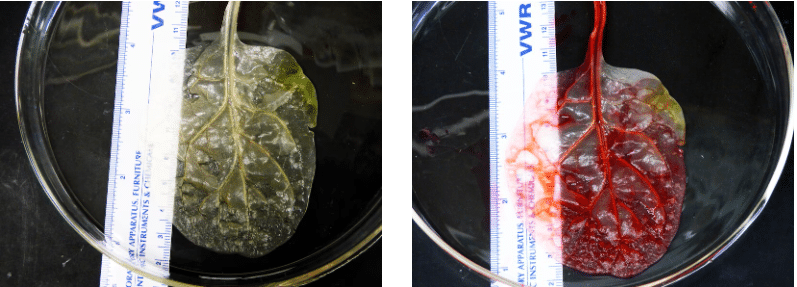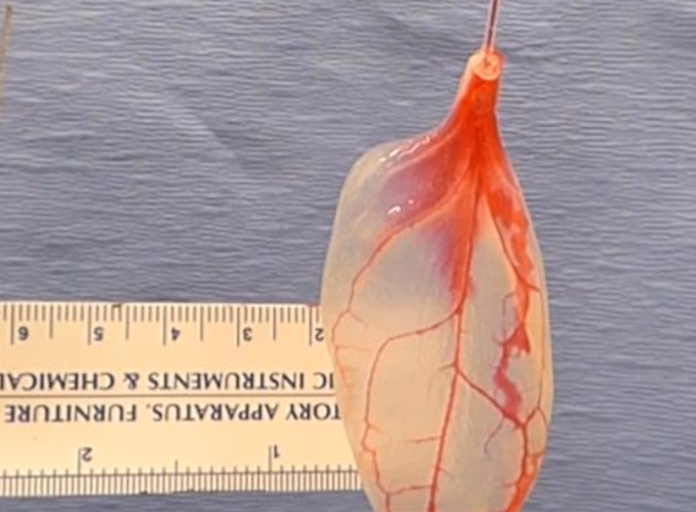Scientists discovered a new way to engineer human heart tissue by using spinach leaves. According to a recent study published in the journal Biomaterials. This discovery is important because creating small blood vessels has always been challenging in tissue engineering. Without a working vascular system, tissue death risk is high.
Researchers investigated the thin veins in spinach leaves to simulate blood movement in human tissue. The study involved removing the plant cells and keeping the cellulose frame that is biocompatible and used in bone tissue engineering, wound healing, and cartilage tissue engineering.
The scientists coated the cellulose frame with live human cells, allowing tissue to grow on the spinach scaffold and encase the tiny veins.The team transformed the spinach leaf into a mini heart, demonstrating that blood cells can move through the system.
The goal is to replace damaged tissue in individuals who have experienced cardiac issues. The modified leaf veins can provide oxygen to replacement tissue, crucial in developing new heart matter.
The researchers believe that similar techniques could be used to repair other body tissues by utilizing other plants. For instance, replacing cells in wood might eventually help fix human bones.
Glenn Gaudette, co-author of the study, claims that this technique has great potential. Although there is still more work to do, the results are very promising. Transforming common plants that farmers have cultivated for thousands of years for use in tissue engineering could solve several issues that have limited the field.
Undoubtedly. this discovery brings hope for patients with damaged organs and presents a new approach to tissue engineering. Spinach leaves can construct functional human heart tissue, a remarkable achievement in regenerative medicine.



